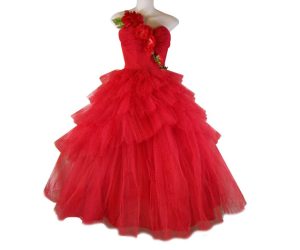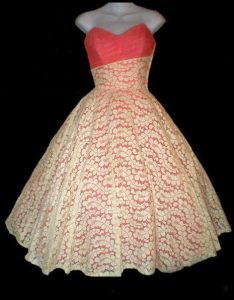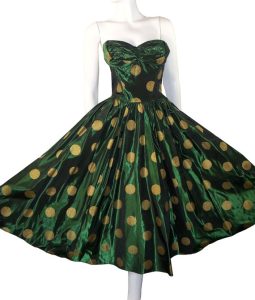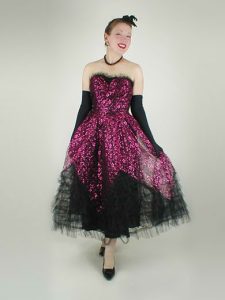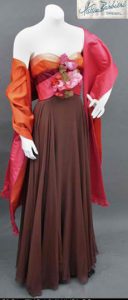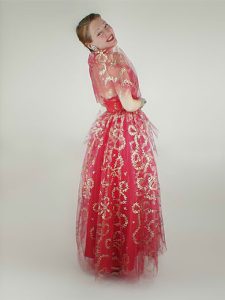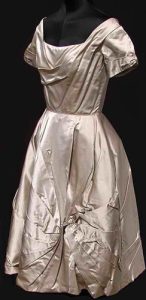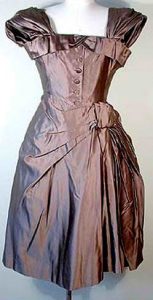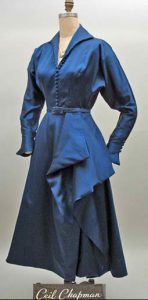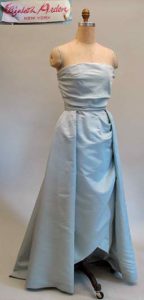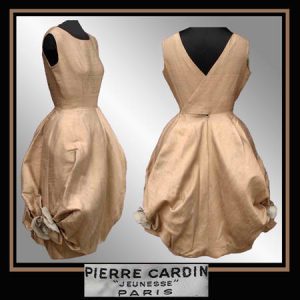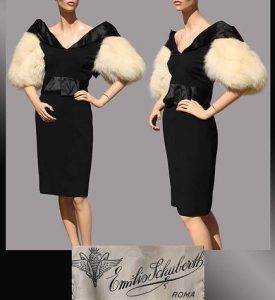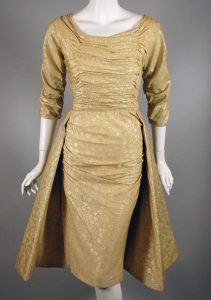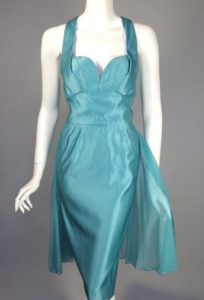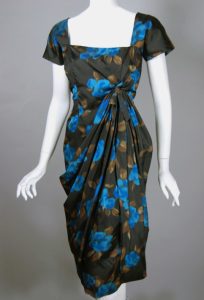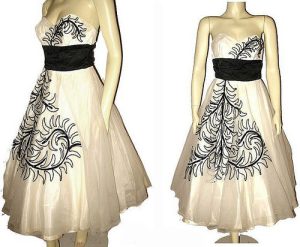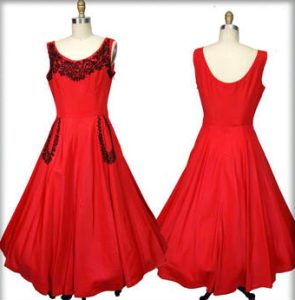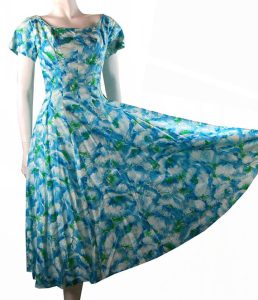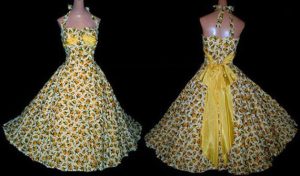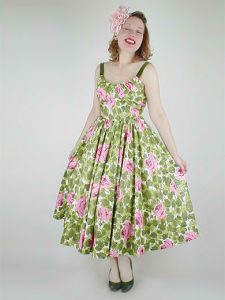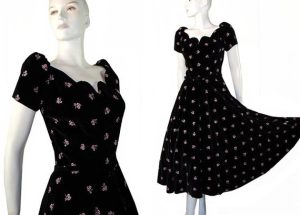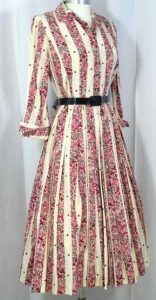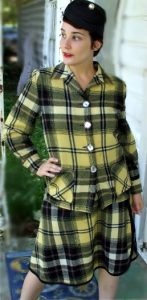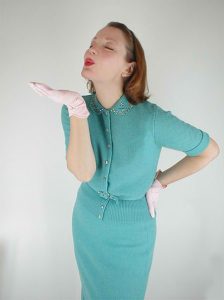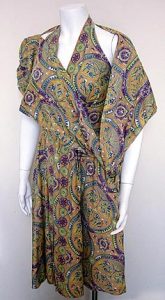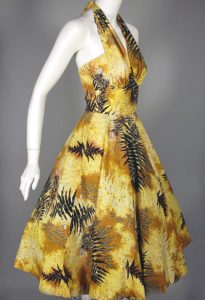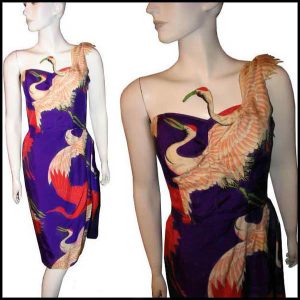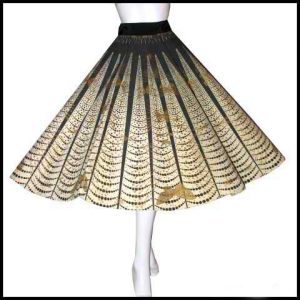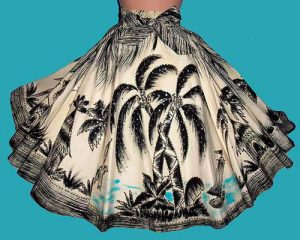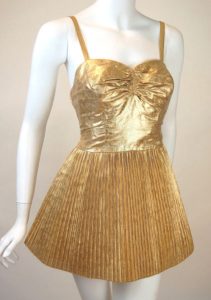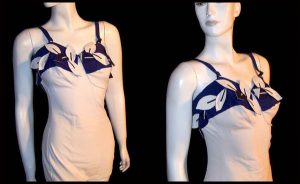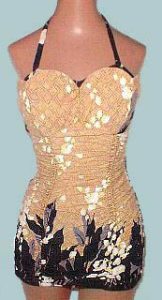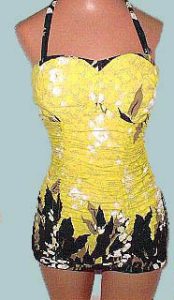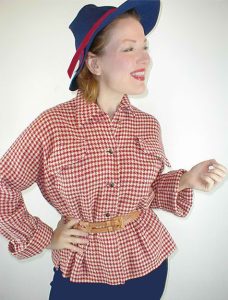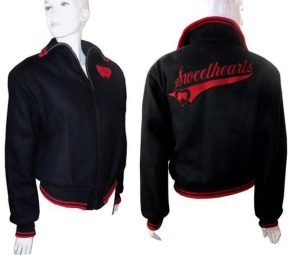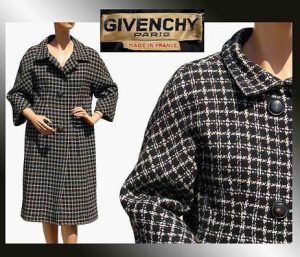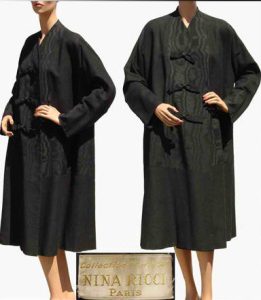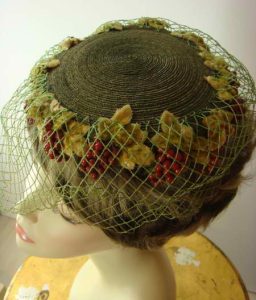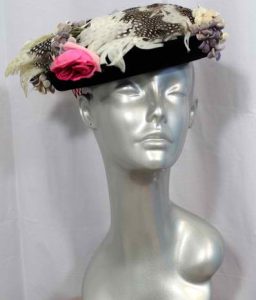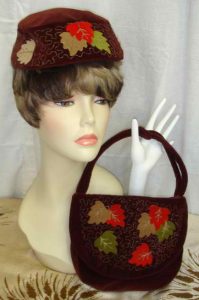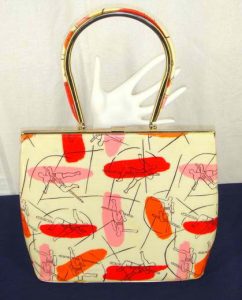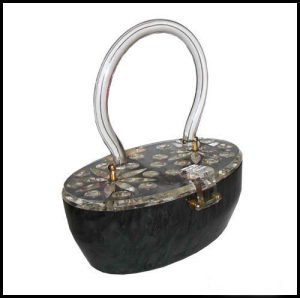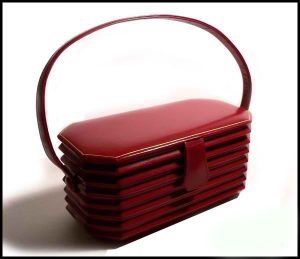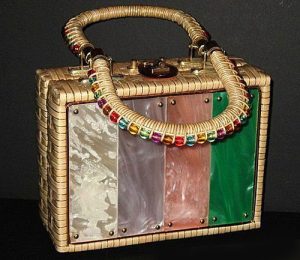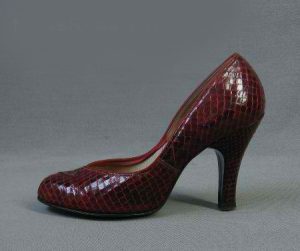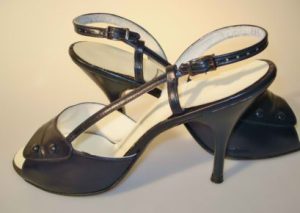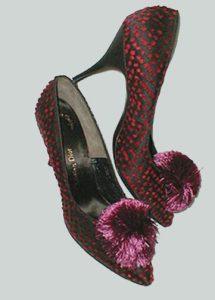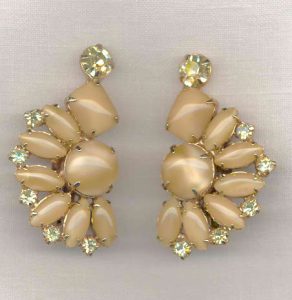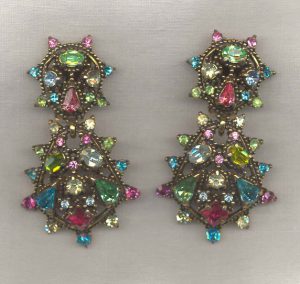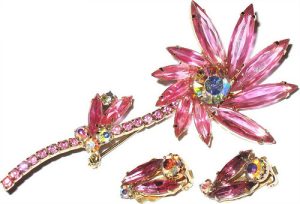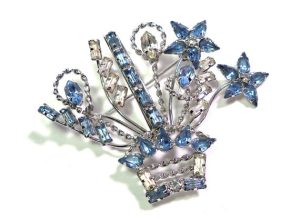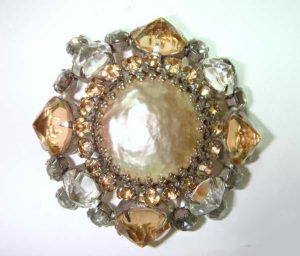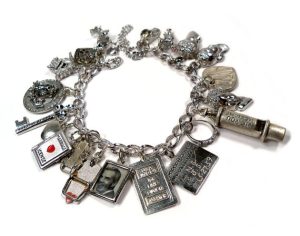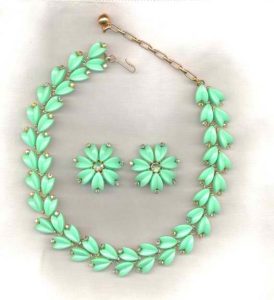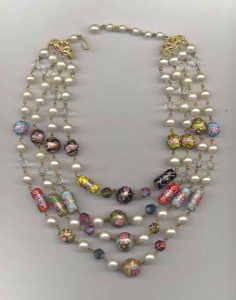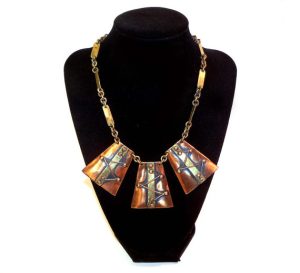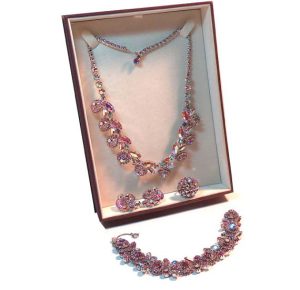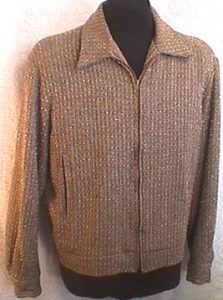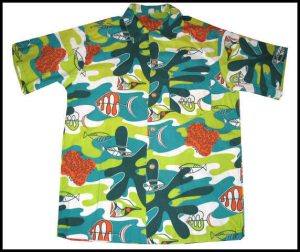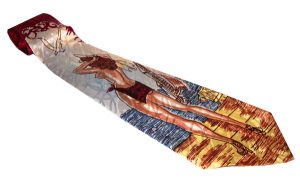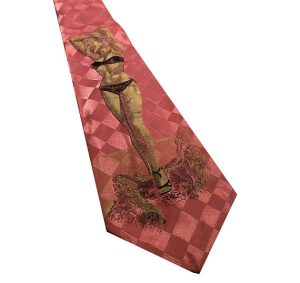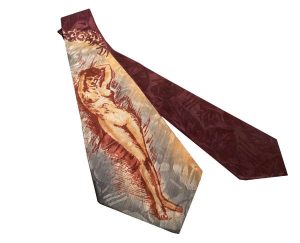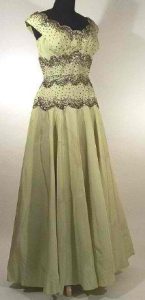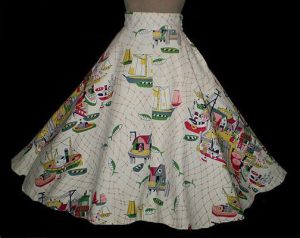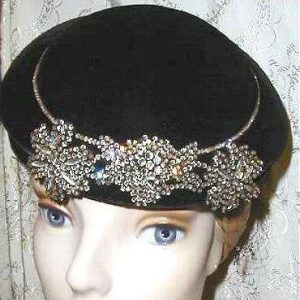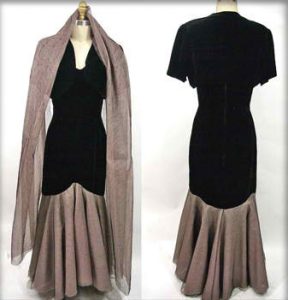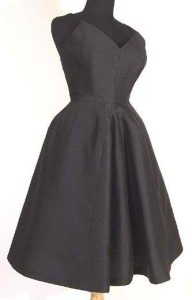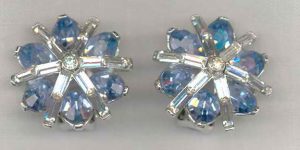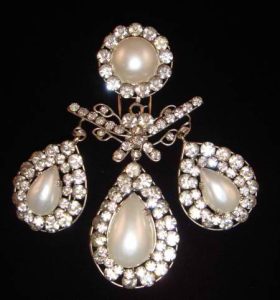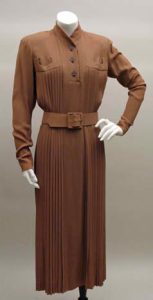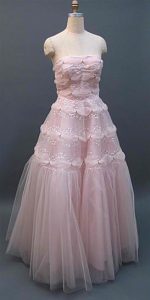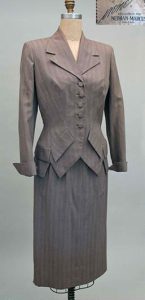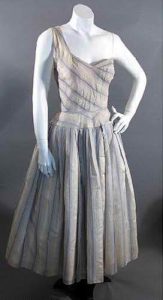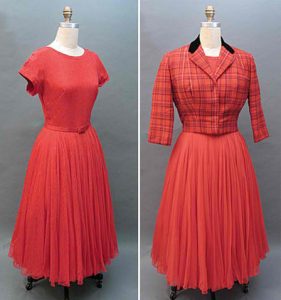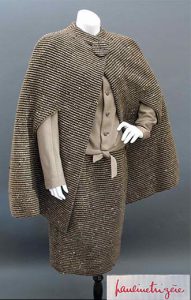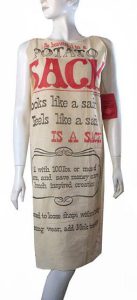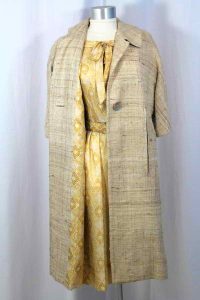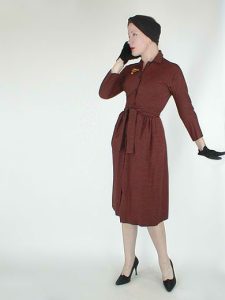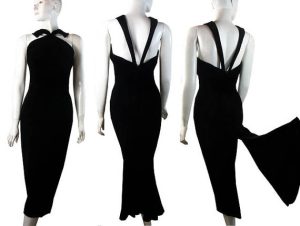Dior’s 1947 New Look had symbolized a new hope and by the 1950s both the hope and the style were fully embraced.
Hems fell and hems rose but the hourglass silhouette remained. In addition to the full skirt, slender pencil skirts were worn too. The emphasis on silhouette and form created a dependency on foundation garments – bullet bras, corselets, waist-cinchers and girdles pulled in, pushed out and persuaded while crinolines lifted and shaped full-circle skirts.
The 1950s saw the birth of pret-a-porter (ready-to-wear), at first seen as a necessary evil but eventually gaining respect. The US War Production Board sponsored a measurements survey of 100,000 women, using the data to standardize sizing for the garment industry.
Led by Dior, Paris couture retained its popularity but the private couturier was being supplanted by pret-a-porter and mass production. Design houses such as the USA’s Suzy Perette and Lilli Ann and Horrockses in the UK, as well as American designers such as Ceil Chapman and Tina Leser, were proving that off-the-rack garments of quality could be made. America led the way with ready-to-wear, and high fashion, once restricted to the wealthy, was available to the general population.
1950s fashion was regulated by three C’s – code, conformity and consumerism. Women’s focus was on rearing children and keeping house as they had largely left the war years’ workplace. Both men’s and women’s activities centered around family and home and clothing changed as a result. Emphasis was on practical but attractive housedresses, not only for household chores but suitable for quick errands or the school run. Women dressed for ‘wifely’ roles!
A female function was to entertain or attend social gatherings – all to promote and further their spouse’s career. Cocktail dresses – short versions of ball gowns – were essential. A woman was expected to wear a hat outside of the house (except for the most formal evening occasions) and gloves at all times – short for day, long for evening. Men tended almost to universally wear suits. The practice of dressing young people like their elders was still common, with the ‘mother/daughter’ look particularly in vogue.
The second half of the 1950s still emphasized women dressing for ‘their man.’ Structural garments (such as stiletto heels, girdles and bullet bras) were designed to highlight the natural appeal of a woman’s figure, instead it virtually characterized it. American designer Anne Fogarty even wrote a book called “Wife-Dressing”, where she emphasized that a woman is never properly attired without her girdle.
The economy boomed and travel became affordable, encouraging worldwide ethnic influences on fashion. Hawaiian textiles were popular for summer wear and Asian brocades for formal wear. A correlation was seen between fashion and other consumer goods (such as cars) and popular annual colors were mirrored in both. Strong design elements echoed across the board, an example being the aggressive fin-tailed, streamlined car designs that echoed women’s bullet bras.
In the latter 1950s two new looks arrived on the scene. Dior was not the sole practitioner of the fashionable silhouette. Balenciaga was also influential and in the mid-1950s he created flawlessly cut clothing with loose, stand-away backs with fitted fronts and shorter sleeves. He also introduced the sack dress, a shapeless shift, which was far removed from the hourglass silhouette that had endured for a decade. In 1958, Yves Saint Laurent successfully presented the Trapeze Dress for the house of Dior. More structured than the sack dress, but still offering comfort and freedom, its look eventually evolved into the mid-1960s babydoll style.
Written by The Vintage Fashion Guild
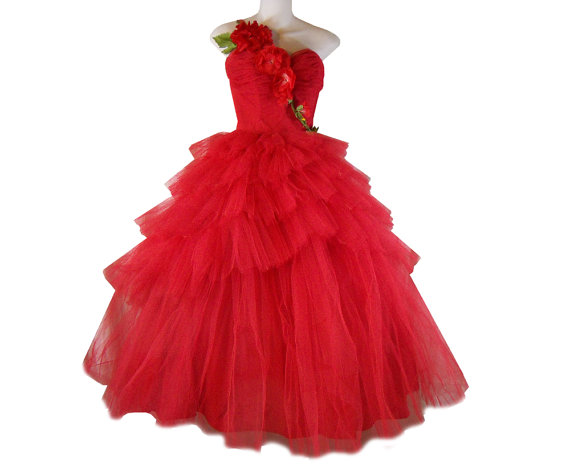
1950s Will Steinman dress
Courtesy of pinkyagogo
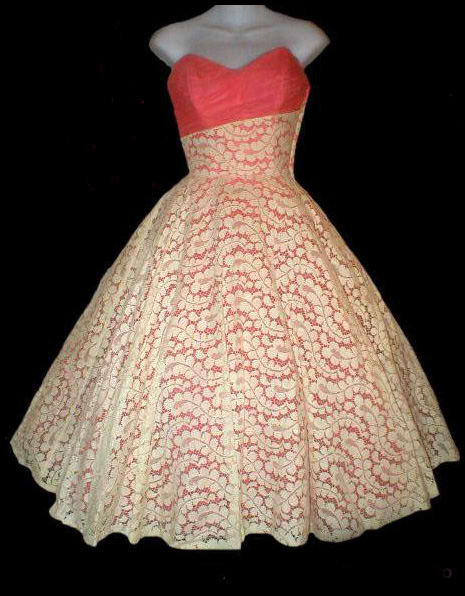
1950s cotton lace over tulle party dress
Courtesy of pinkyagogo

1950s BeauTime sharkskin gown
Courtesy of pinkyagogo
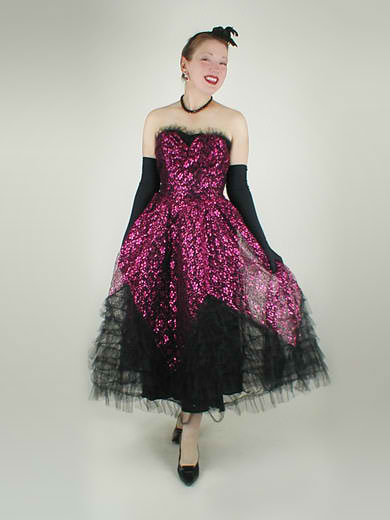
1950s party dress
Courtesy of denisebrain
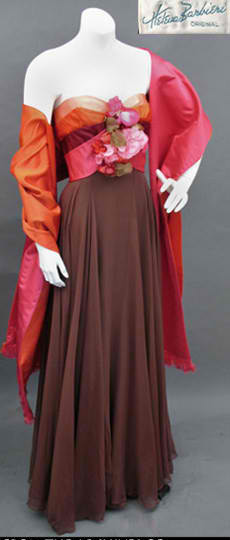
1950s Helena Barbieri silk chiffon gown
Courtesy of pastperfectvintage com
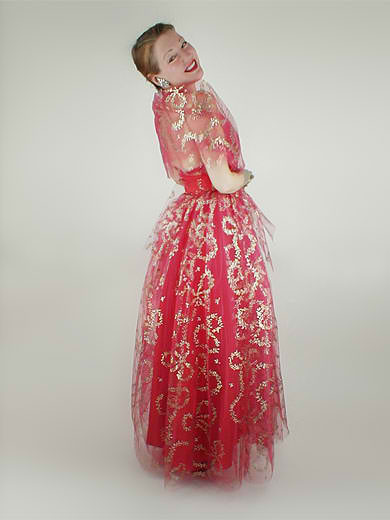
1950s Emma Domb gown
Courtesy of denisebrain
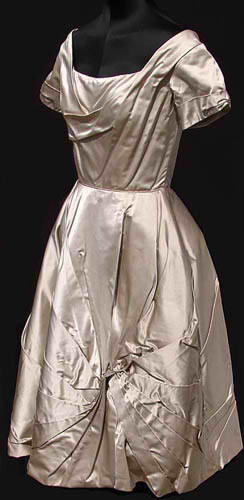
1950s Ceil Chapman cocktail dress
Courtesy of poppysvintageclothing
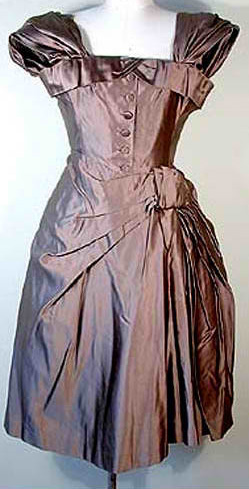
1950s Christian Dior couture dress
Courtesy of poppysvintageclothing
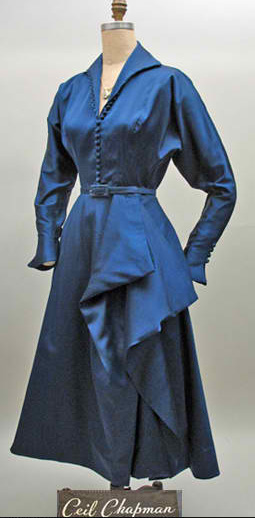
1950s Ceil Shapman dress
Courtesy of pastperfectvintage.com
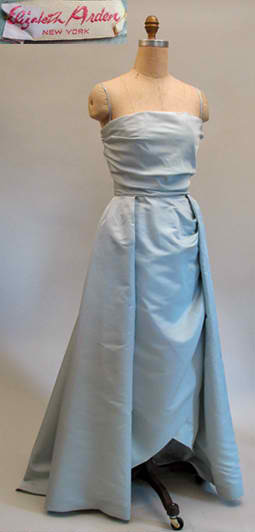
1950s Elizabeth Arden silk gown
Courtesy of pastperfectvintage.com
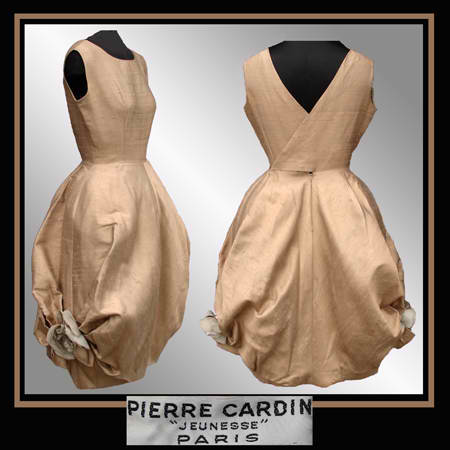
1950s Pierre Cardin bubble dress
Courtesy of poppysvintageclothing
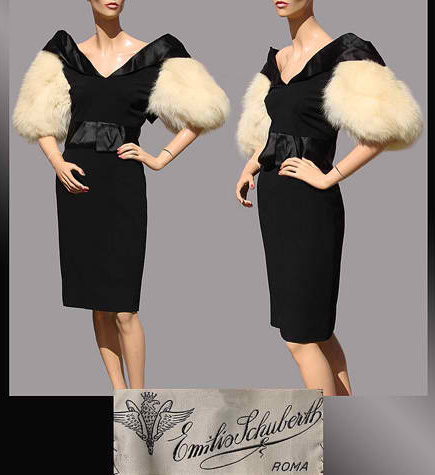
1950s Emilio Schuberth satin & fox trim dress
Courtesy of poppysvintageclothing
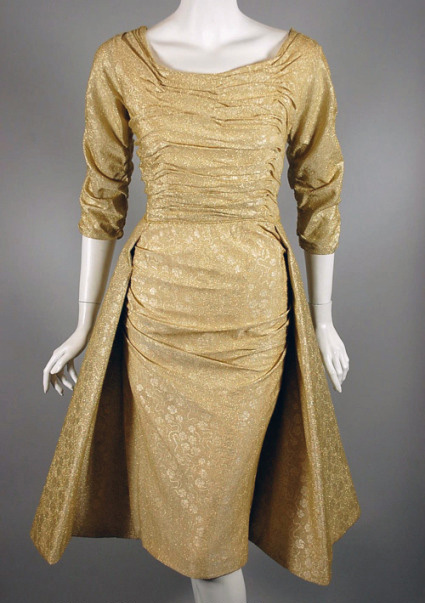
1950s gold metallic brocade dress
Courtesy of vivavintageclothing.com
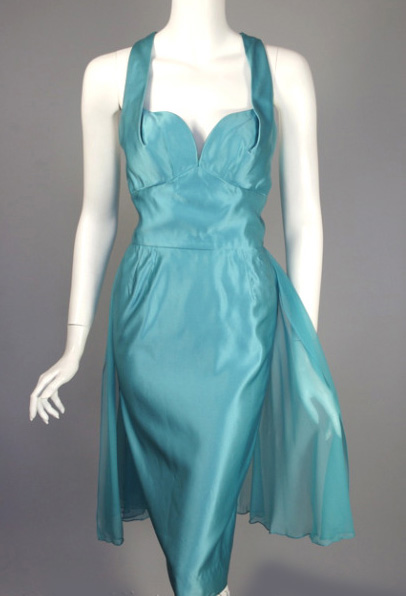
1950s silk satin & chiffon dress
Courtesy of vivavintageclothing.com
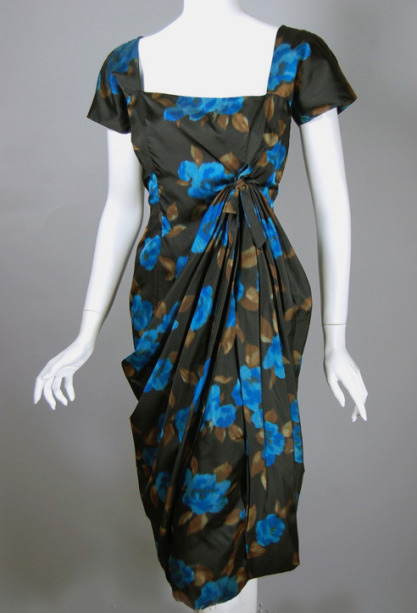
1950s silk floral dress
Courtesy of vivavintageclothing.com
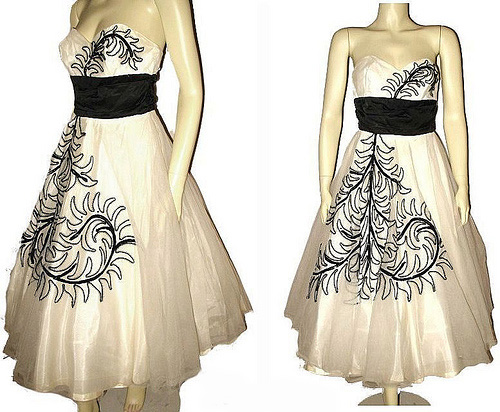
1950s strapless cocktail dress
Courtesy of fallsavenuevintage
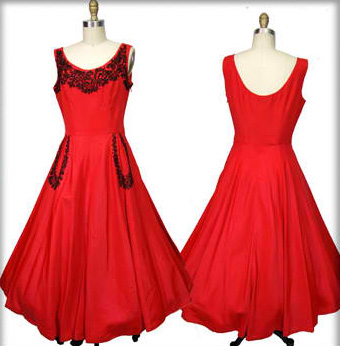
1950s Emma Domb dress
Courtesy of noblesavage.com
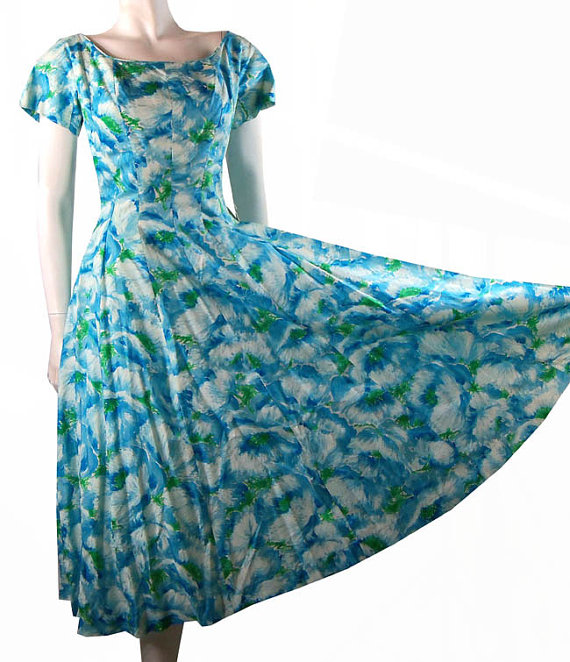
1950s GiGi Young silk dress
Courtesy of pinkyagogo
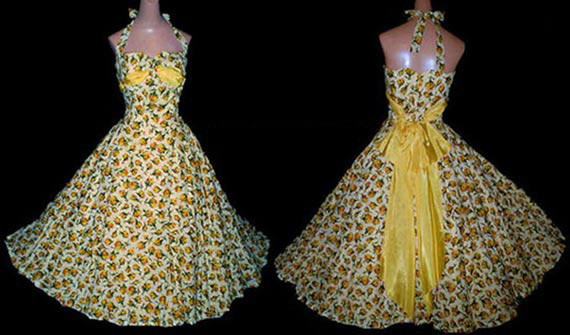
1950s Lilli Diamond halter dress
Courtesy of thespectrum
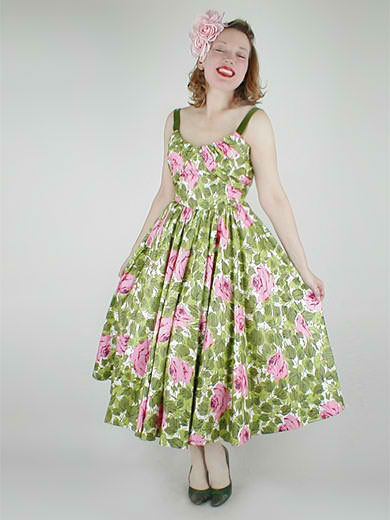
1950s cotton sateen dress
Courtesy of denisebrain
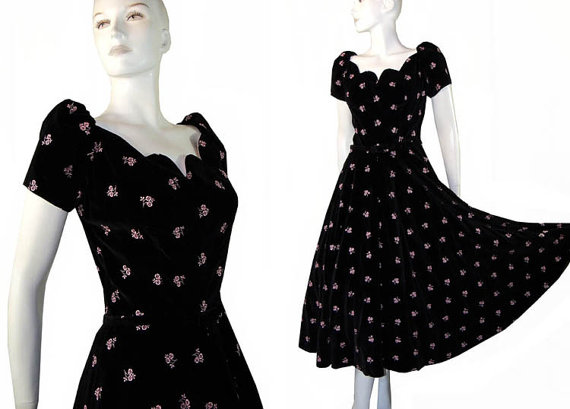
1950s velvet party dress
Courtesy of pinkyagogo
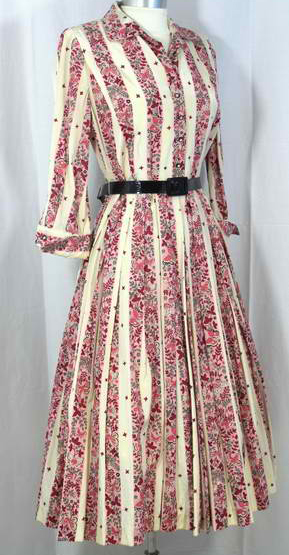
1950s Puritan Forever silk print dress
Courtesy of cur.iovintage
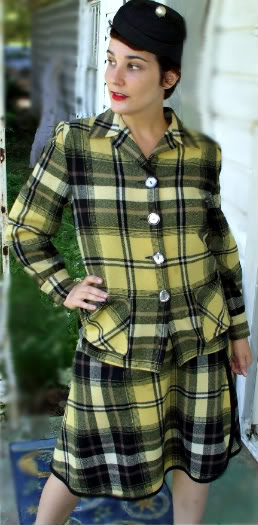
1950s Pendleton plaid suit
Courtesy of bijouvintage
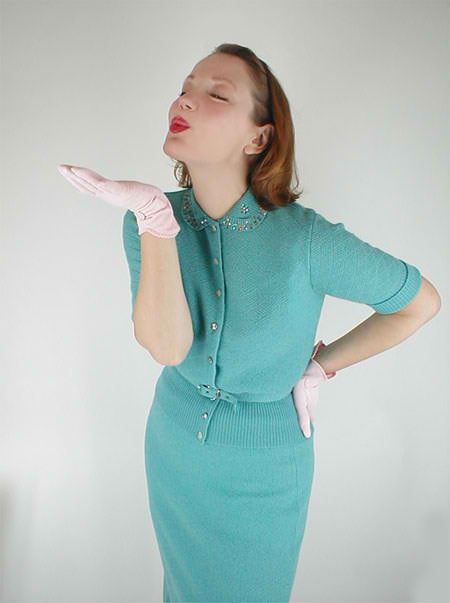
1950s bouclé knit suit
Courtesy of denisebrain
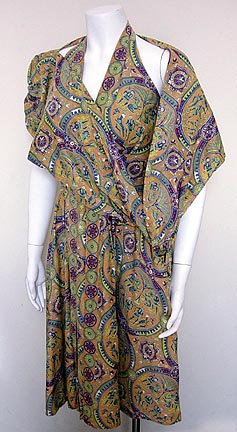
1950s Tina Leser cotton print dress with wrap
Courtesy of Vintage-voyager.com
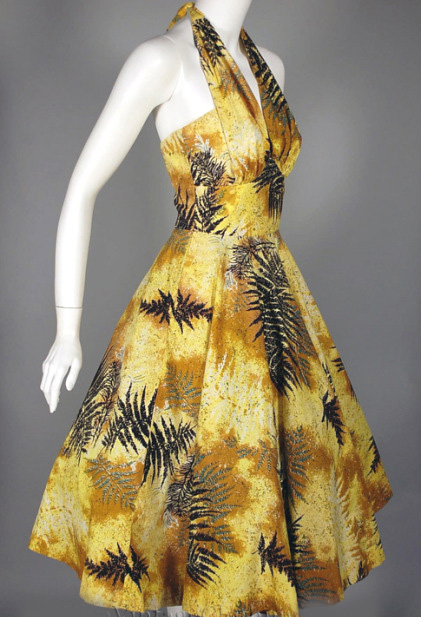
1950s sundress
Courtesy of vivavintageclothing.com
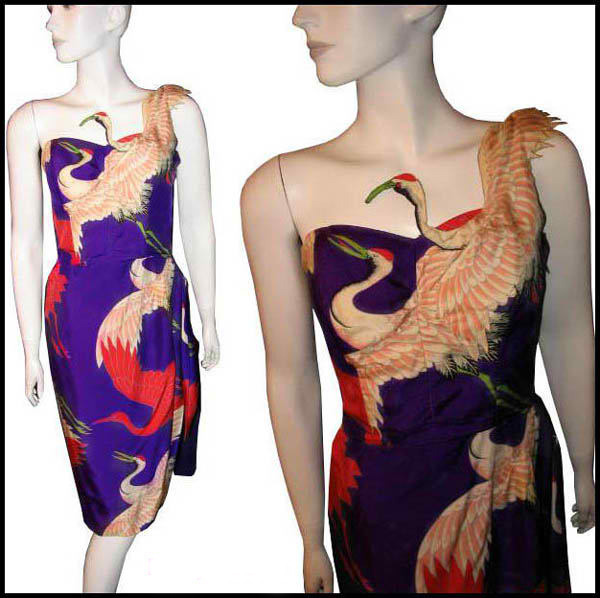
1950s Gladys Wilson Hawaii silk sarong dress
Courtesy of pinkyagogo
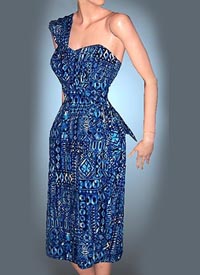
1950s Surfriders cotton dress
Courtesy of thevintagepeddler.com
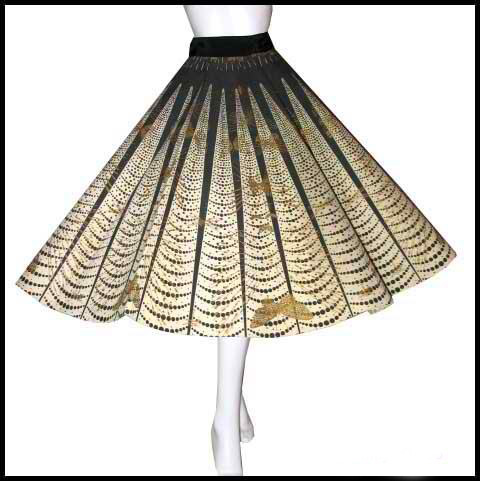
1950s full circle skirt made of paper
Courtesy of pinkyagogo
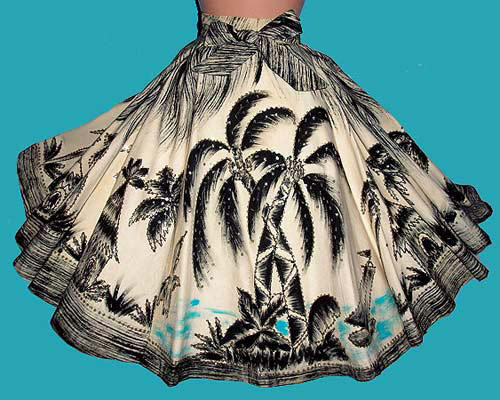
1950s hand painted Mexican skirt
Courtesy of thespectrum
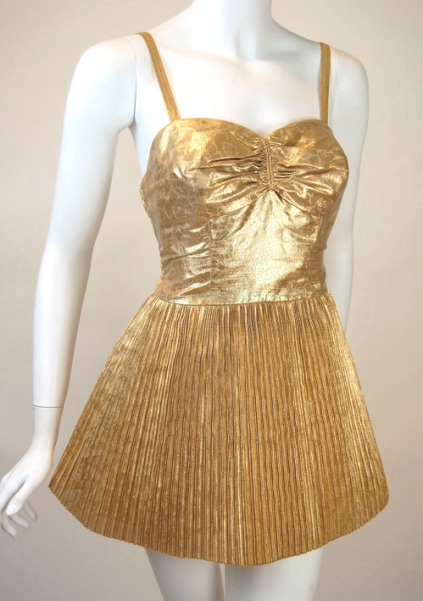
1950s Alix of Miami gold dress
Courtesy of vivavintageclothing.com
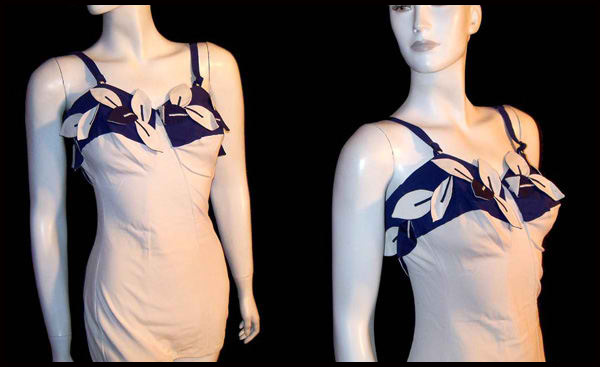
1950s Deweese petal swimsuit
Courtesy of pinkyagogo
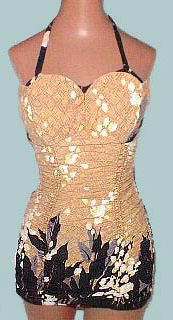
1950s Miss Hawaii Kamehameha swimsuit
Courtesy of thespectrum
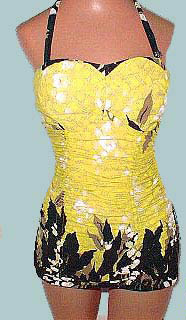
1950s Miss Hawaii Kamehameha swimsuit
Courtesy of thespectrum
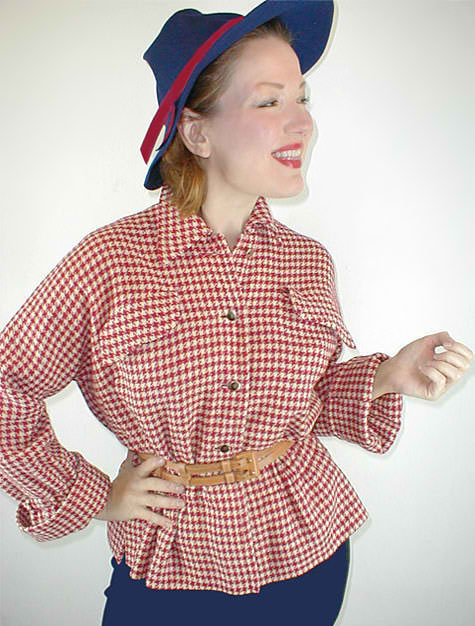
1950 Bonnie Cashin jacket
Courtesy of denisebrain
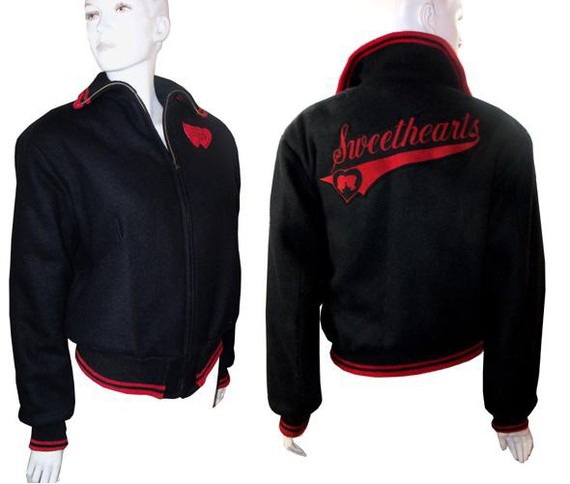
1950s cheerleading jacket by Butwin
Courtesy of pinkyagogo
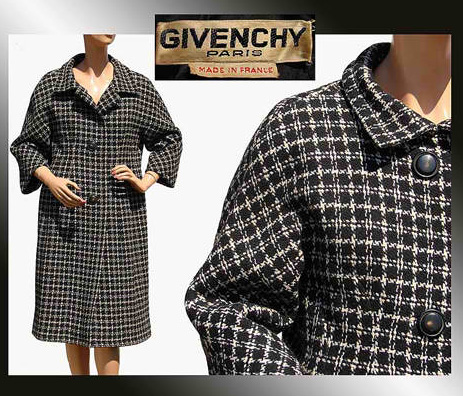
1950s Givenchy wool houndstooth coat
Courtesy of poppysvintageclothing
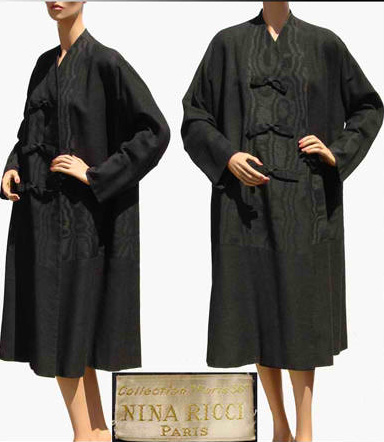
1950s Nina Ricci wool and moiré silk faille coat
Courtesy of poppysvintageclothing
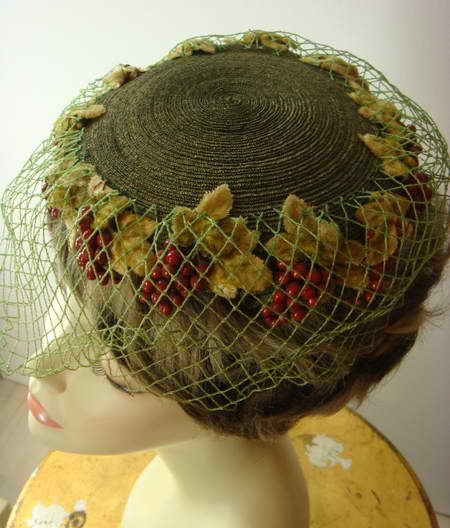
1950s Dior leaves & berries pillbox hat
Courtesy of cur.iovintage
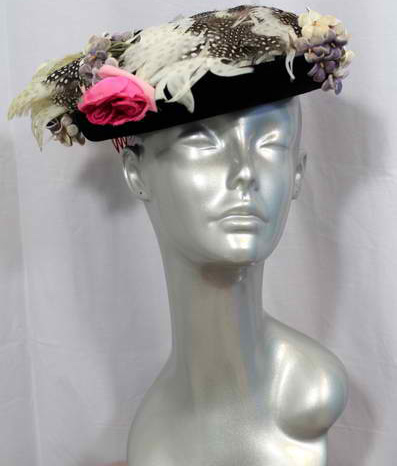
1950s Irene of NY velvet & feathers hat
Courtesy of cur.iovintage
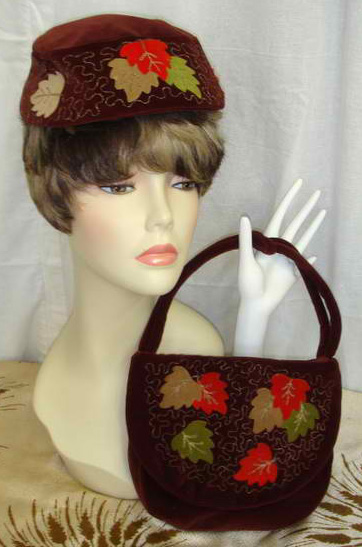
1950s Doris hat & purse set
Courtesy of cur.iovintage
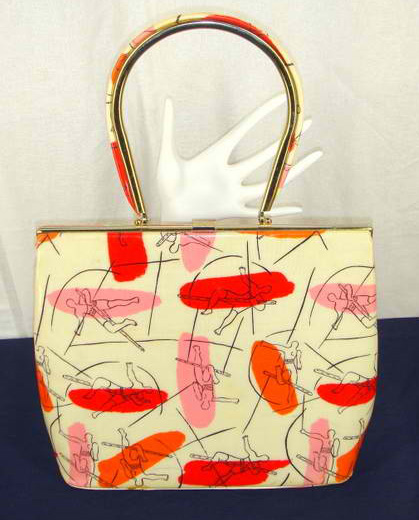
1950s Fernand Léger inspired patent leather purse
Courtesy of cur.iovintage
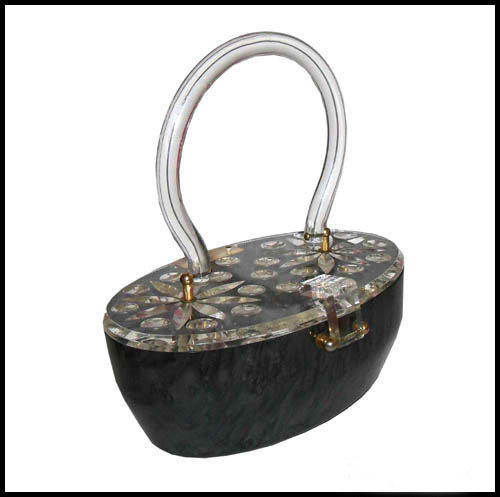
1950s carved lucite bag
Courtesy of pinkyagogo
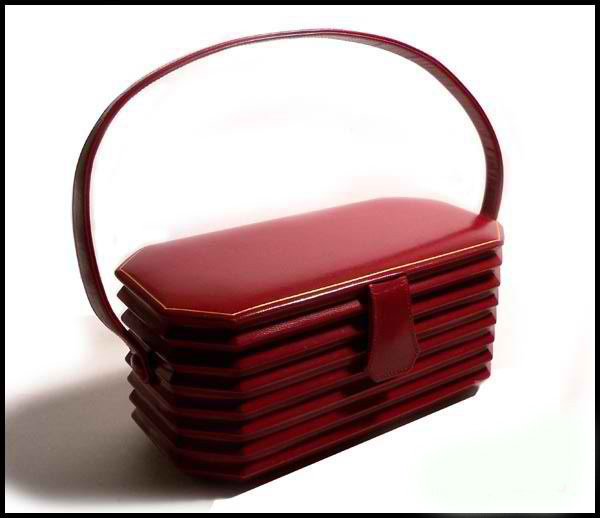
1950s accordian wood & leather box purse
Courtesy of pinkyagogo
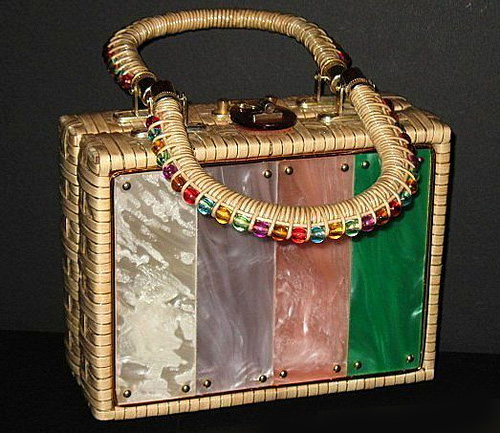
1950s box purse
Courtesy of fallsavenuevintage
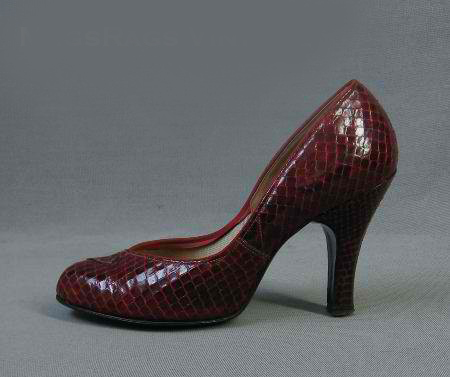
1950s reptile shoes
Courtesy of magsragsvintage
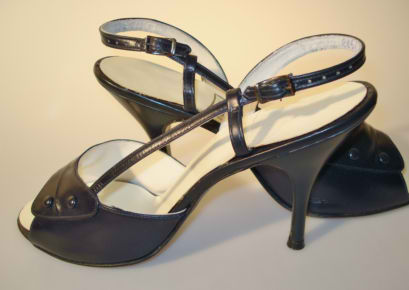
1950s strappy leather stilettos
Courtesy of jazzbug
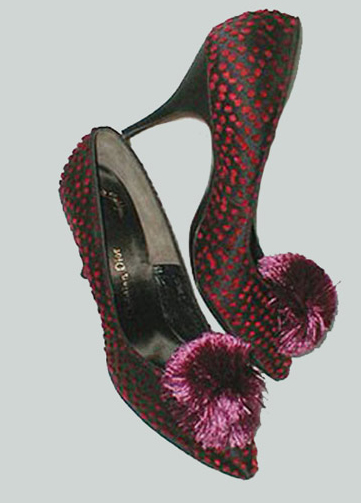
1950s Roger Vivier for Dior stiletto shoes
Courtesy of thespectrum
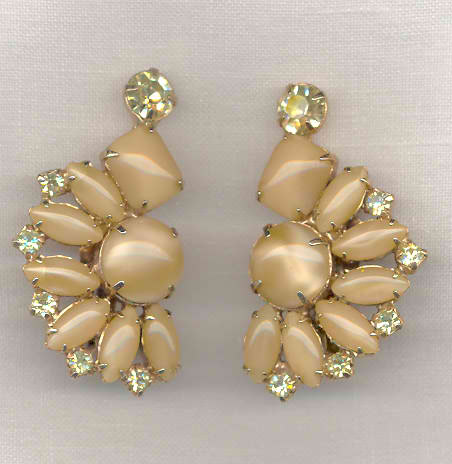
1950s D & E Moonstone earrings
Courtesy of linnscollection
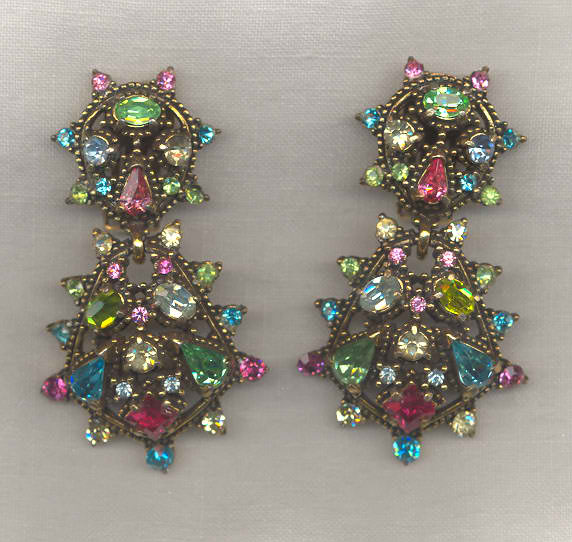
1950s Hollycraft earrings
Courtesy of linnscollection
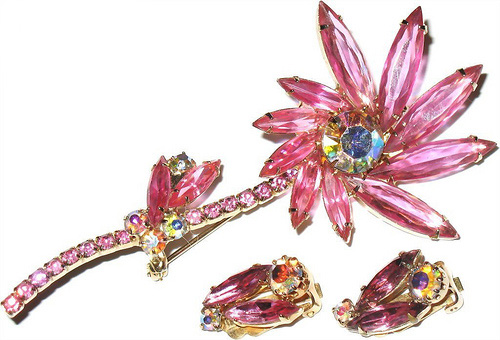
1950s pink flower rhinestone brooch & earring set
Courtesy of fallsavenuevintage
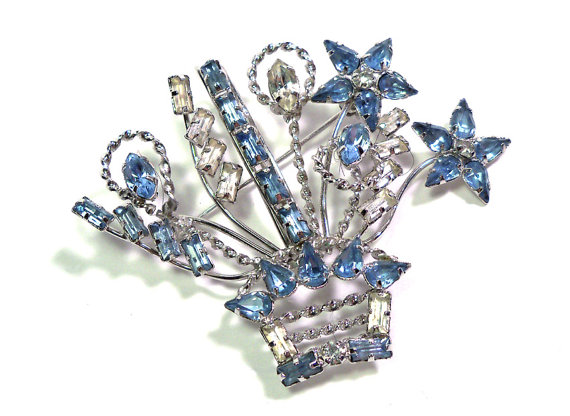
1950s Star Art sterling rhinestone brooch
Courtesy of pinkyagogo
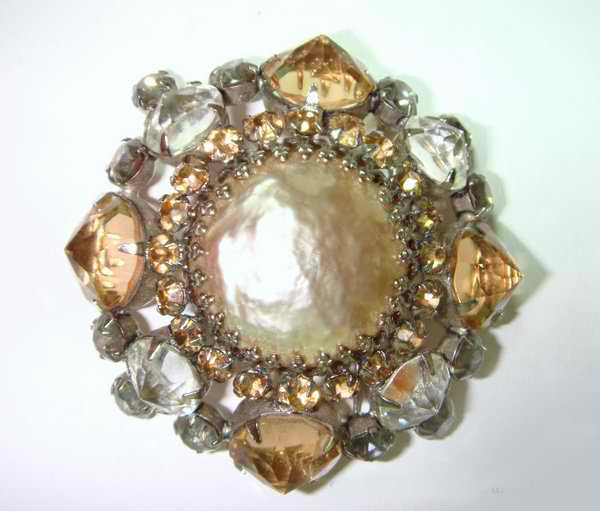
1950s Schreiner brooch
Courtesy of cur.iovintage
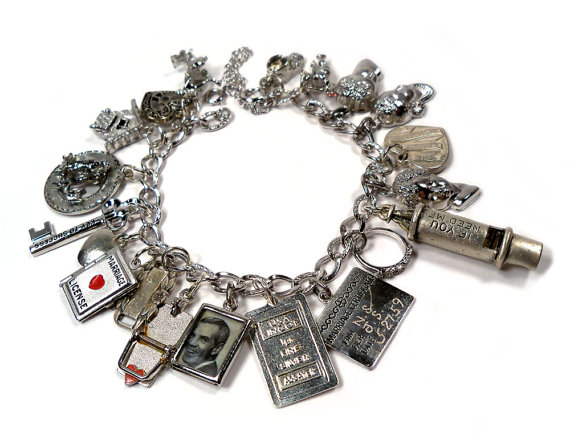
1950s sterling charm bracelet
Courtesy of pinkyagogo
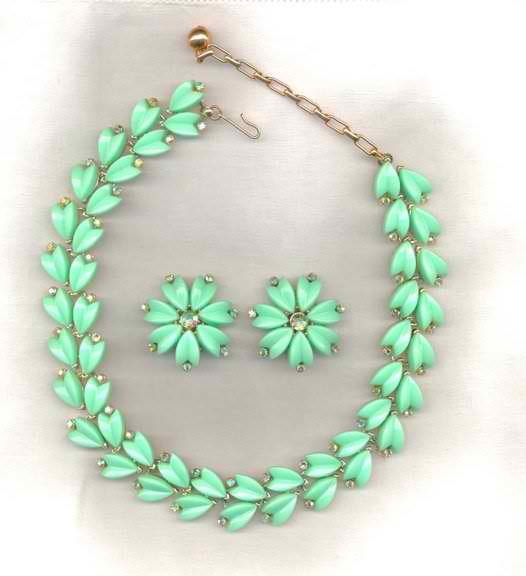
1950s Kramer necklace & earrings set
Courtesy of linnscollection
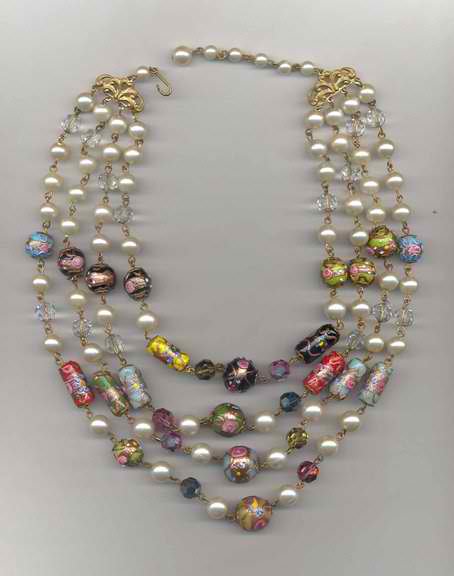
1950s Venetian bead & crystal necklace
Courtesy of linnscollection
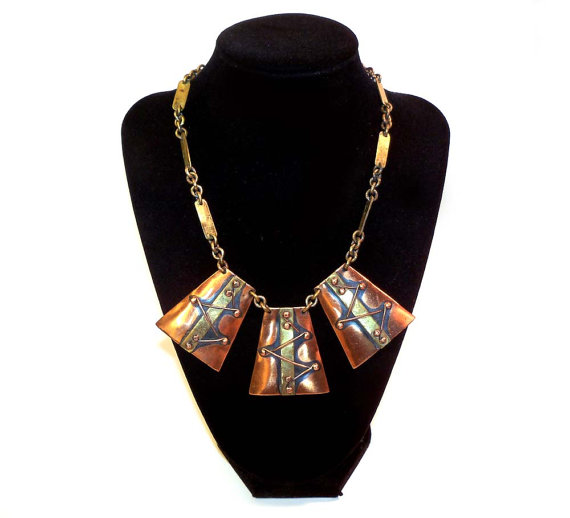
1950s Winifred Mason modernist copper neckalce
Courtesy of pinkyagogo
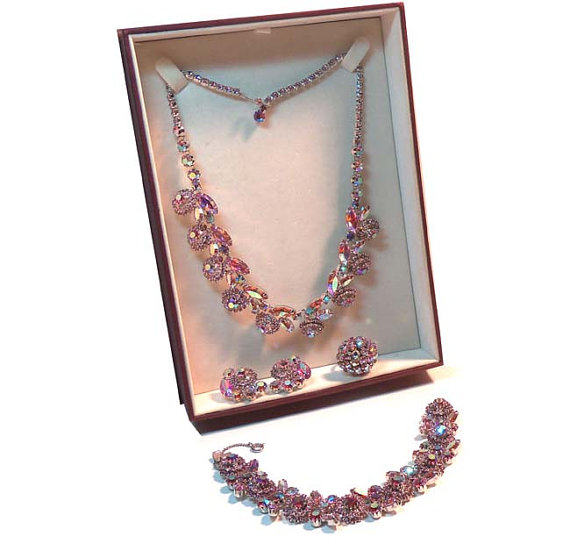
1950s Weiss pink Aurora Borealis 4 piece set
Courtesy of pinkyagogo
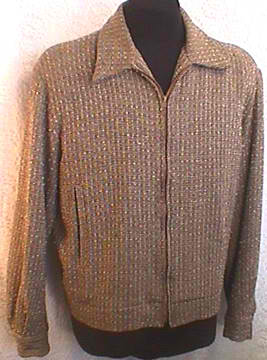
1950s tweed wool jacket
Courtesy of mariansvintagevanities
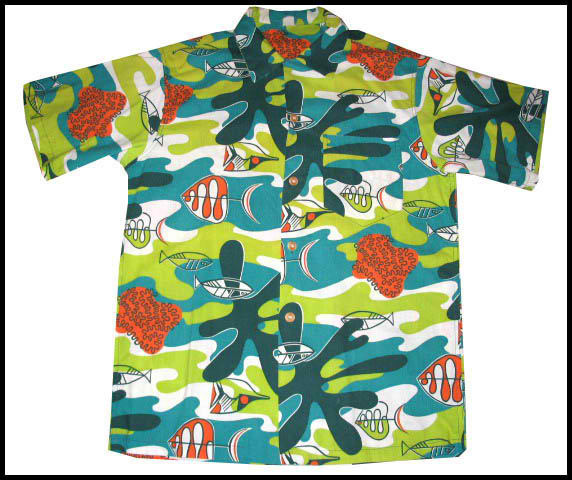
1950s Jantzen atomic Hawaiian shirt
Courtesy of pinkyagogo
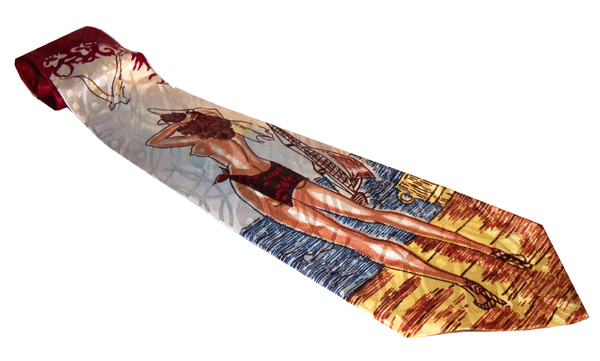
1950s risqué necktie
Courtesy of pinkyagogo
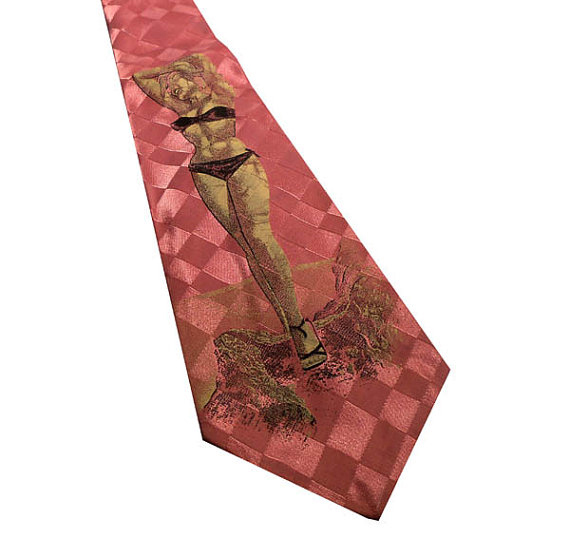
1950s pinup necktie
Courtesy of pinkyagogo
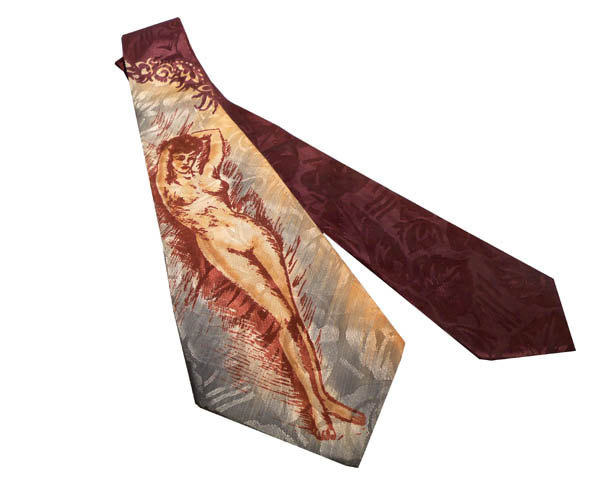
1950s necktie
Courtesy of pinkyagogo
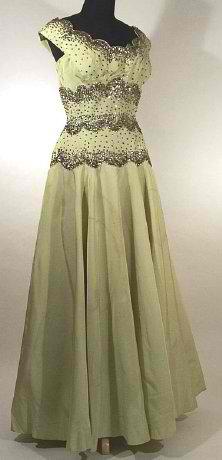
1950 Worth of London gown
Courtesy of kickshawproductions
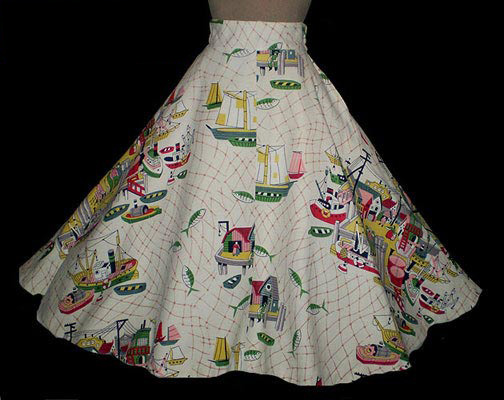
early 1950s Joseph Zukin novelty print skirt
Courtesy of thespectrum
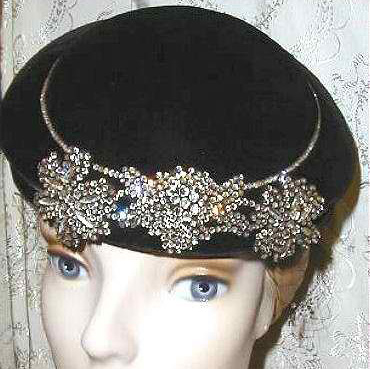
early 1950s Lilly Daché (one of a kind) rhinestone encrusted hat
Courtesy of ruedelapaix
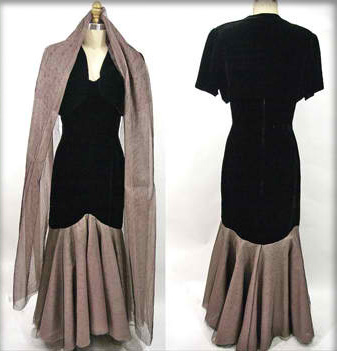
early 1950s Claire Conte, Paris gown
Courtesy of noblesavagevintage.com
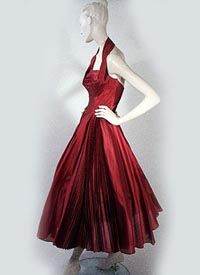
early 1950s red silk gown
Courtesy of contentmentfarmantiques.com
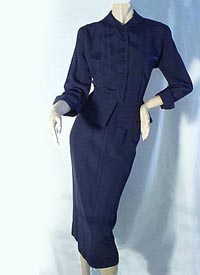
early 1950s faille suit
Courtesy of coutureallurevintage.com.
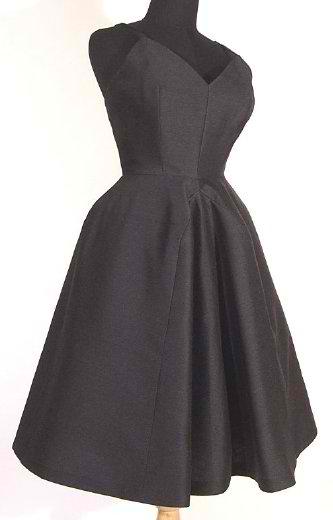
c. 1952 Dior Paris dress (shortened)
Courtesy of kickshawproductions
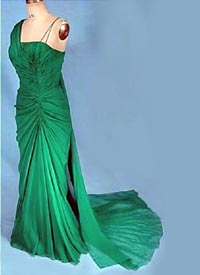
1952 emerald chiffon evening gown
Courtesy of antiquetextile.com
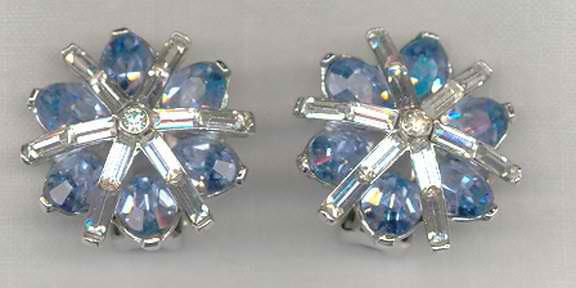
1953 Trifari earrings
Courtesy of linnscollection
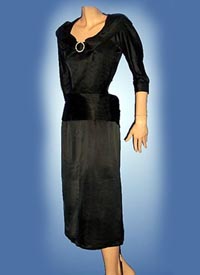
1953 Suzy Perette satin dinner dress
Courtesy of thevintagepeddler.com
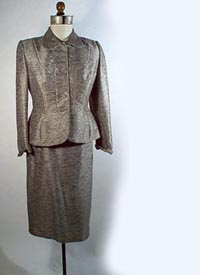
1954 Lilli Ann silk and wool suit
Courtesy of pastperfectvintage.com
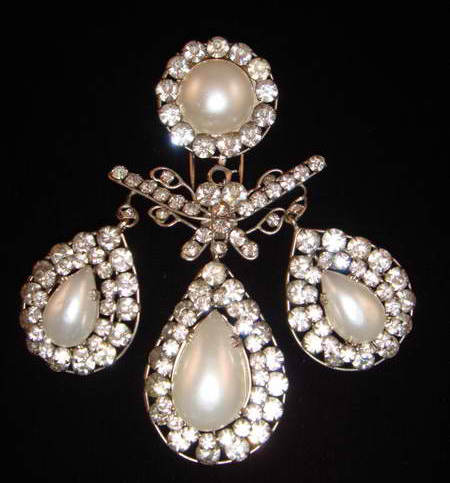
1954 Scemama for Givenchy Girandole fur clip
Courtesy of cur.iovintage
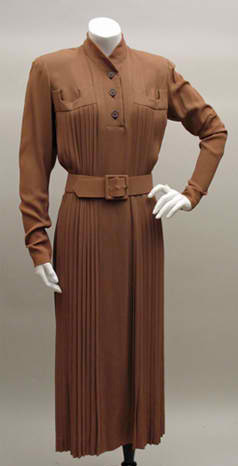
1954 Jacques Fath crepe dress
Courtesy of pastperfectvintage.com
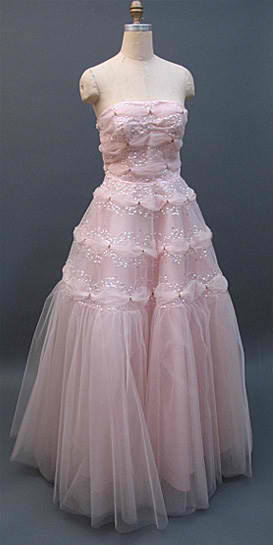
1955 pink net formal dress
Courtesy of pastperfectvintage.com
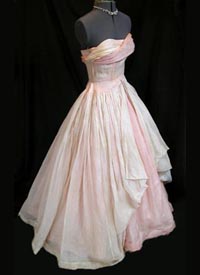
1955 Ceil Chapman ballgown
Courtesy of memphisvintage.com
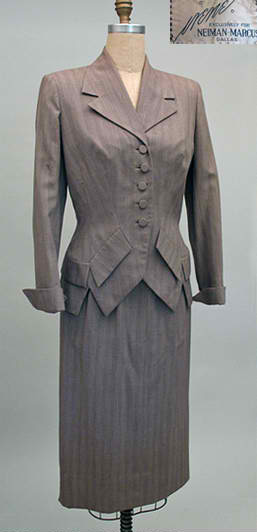
1955 Irene suit
Courtesy of pastperfectvintage.com
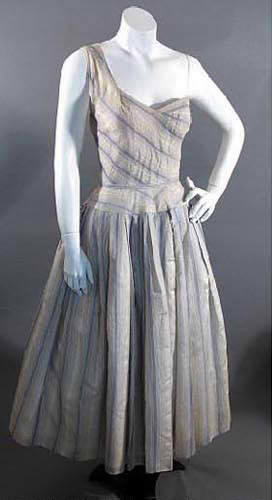
1955 Mainbocher silk dress
Courtesy of pastperfectvintage.com
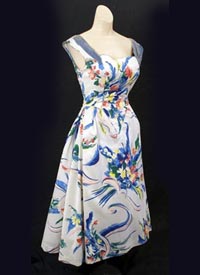
1955 Tina Leser cotton print dress
Courtesy of vintagetextile.com
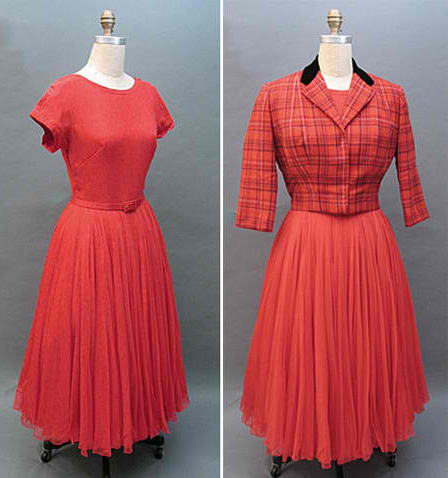
1957 Galanos chiffon dress with jacket
Courtesy of pastperfectvintage.com
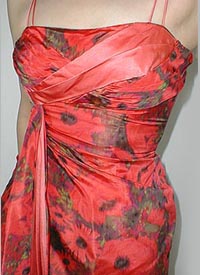
1958 Ceil Chapman silk cocktail dress
Courtesy of denisebrain
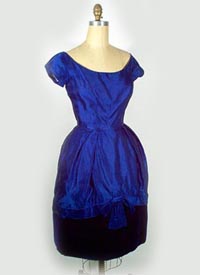
1958 Bendel’s satin & velvet party dress
Courtesy of pastperfectvintage.com
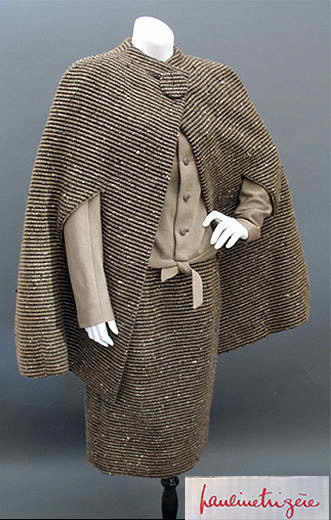
1959 Pauline Trigere 2-piece wool set
Courtesy of pastperfectvintage.com
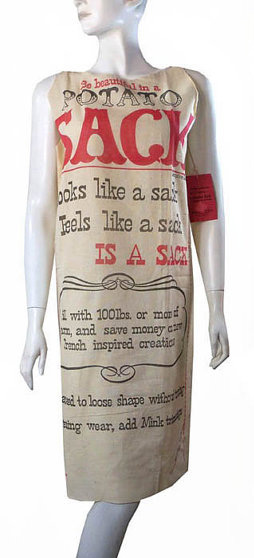
late 1950s novelty potato sack dress
Courtesy of pinkyagogo
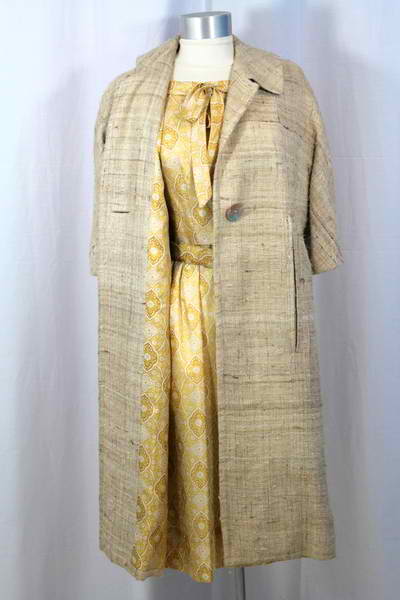
late 1950s Vera Maxwell silk dress and coat ensemble
Courtesy of cur.iovintage
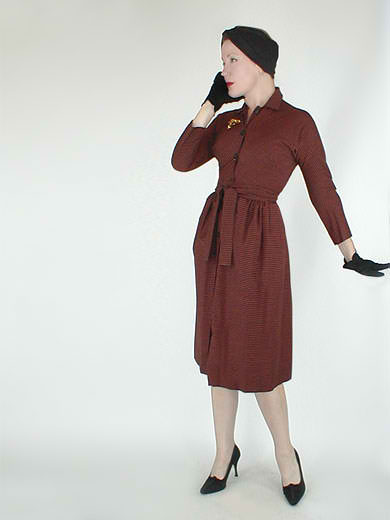
late 1950s Claire McCardell dress
Courtesy of denisebrain
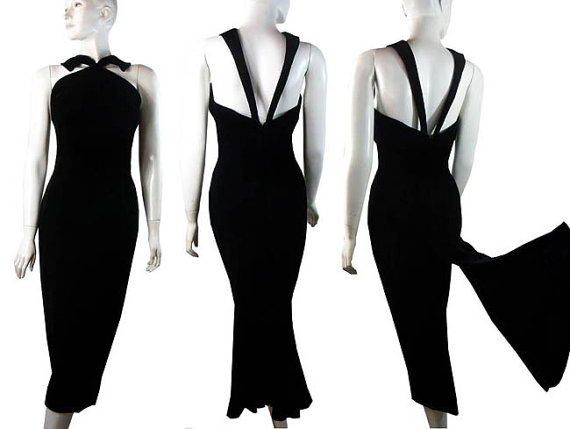
late 1950s Grenelle Estevez velvet gown
Courtesy of pinkyagogo

























































































